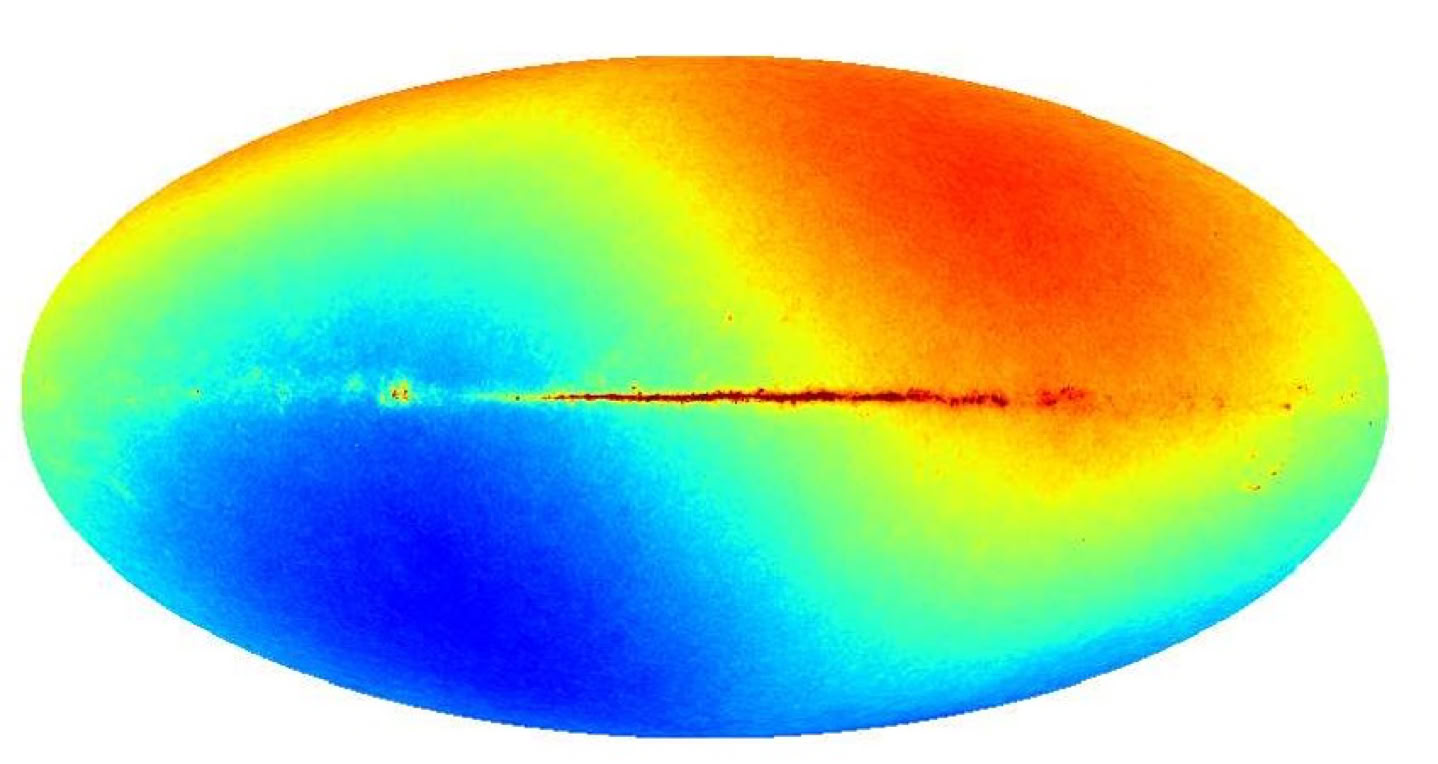by George Cristache, Ph.D. student
Credit: Sullivan, R. M. & Scott, D. The CMB Dipole: Eppur Si Muove, arXiv:2111.12186(2021)
The Cosmic Microwave Background (CMB) is the “fossil light” of the Big Bang, arriving from all directions in the sky. It is extremely uniform, but it shows a clear variation of the dipole type: in one direction it appears slightly warmer, and in the opposite direction, slightly cooler.
This effect arises because we are moving at a speed of about 370 km/s relative to the CMB. Due to the Doppler effect, the radiation seems warmer in the direction of our motion and cooler in the opposite direction. Our motion through the Universe also produces secondary effects in measurements associated with the CMB such as the modulation of anisotropies, optical aberration, and changes in the distribution of galaxies. Researchers have shown that, in principle, these secondary effects can be measured. However, they point out that none of these measurements can guarantee with absolute certainty that the observed dipole is caused only by our motion. In theory, if the Universe itself were “tilted” in one direction (meaning it had an intrinsic dipole), the observed signal would look almost identical. From this, the researchers concluded that while the current data are consistent with the kinematic explanation, they cannot completely rule out a fundamental component suggesting that the Universe may be more complex than we think.
Complementary to these CMB studies, another team of researchers proposed examining the distribution of radio sources in the Universe. Under the cosmological principle, the Universe should look the same in all directions (this is called isotropy). Yet, because we move relative to the rest of the cosmos, we observe a small asymmetry: in one direction we see slightly more sources (because we are moving toward them), and in the opposite direction, fewer. The researchers combined three major radio surveys(NVSS, RACS-low, and LoTSS-DR2) and developed a more precise statistical method to estimate this asymmetry, accounting for the fact that radio sources are not completely random in their distribution (some tend to cluster, increasing the variance). Their result shows that the observed dipole is about 3.7 times stronger than the one expected from our motion through the Universe. This discrepancy is large enough to be considered a statistically significant anomaly.
If this effect is real, it could point to a new cosmological component of the dipole meaning that the Universe might possess a slight intrinsic directional preference. However, researchers remain cautious, emphasizing the need for careful verification of selection effects and possible systematic errors in radio instruments.
References:
Böhme, L. & Schwarz, D. J. Overdispersed Radio Source Counts and Excess Radio Dipole Detection, arXiv:2509.16732 (2025)
Sullivan, R. M. & Scott, D. The CMB Dipole: Eppur Si Muove, arXiv:2111.12186(2021)
